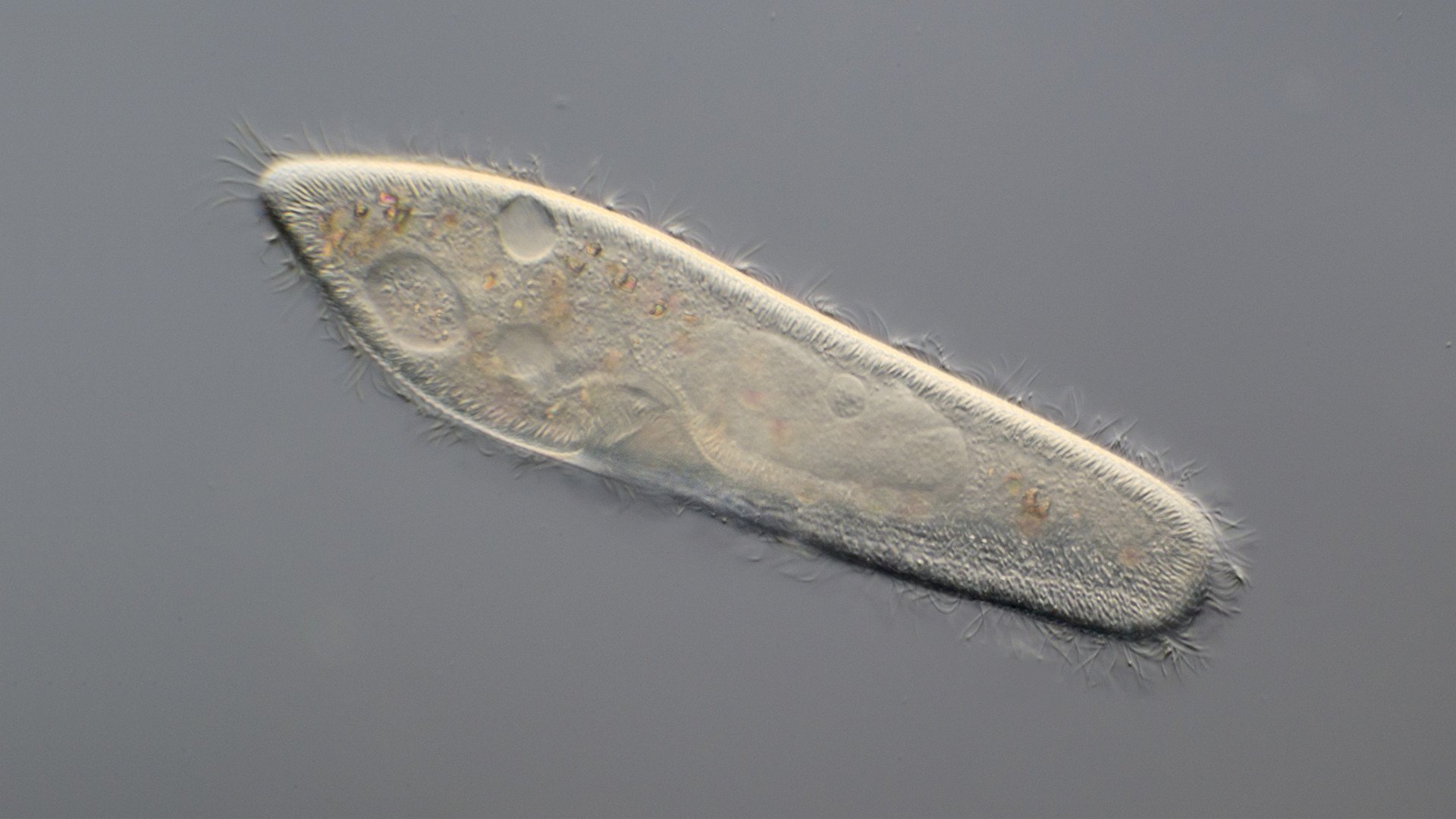When you look at the shape of this single-cell organism, you can immediately understand why it is also known as the ‘slipper animalcule’.
When you look at the shape of this single-cell organism, you can immediately understand why it is also known as the ‘slipper animalcule’.
Vibrating hairs
In addition to its slipper-like shape, the Paramecium caudatum is known for the many short vibrating hairs, or cilia, on the outside of its cell. Those hairs all move in unison, enabling the slipper animalcule to quickly swim in a certain direction.
Salt content
Slipper animalcules have a high salt content compared to the fresh water in which they live. This means they automatically absorb water (osmosis). In order not to swell up and burst, they have two storage bubbles, or vacuoles, which collect the water in the cell and pump it out again. Slipper animalcules mainly eat bacteria, which they sweep inside by moving the cilia in the oral groove. Once inside the cell, the bacteria are encased in food vacuoles, following which they are digested. The slipper animalcule, in turn, serves as food for zooplankton, small fish and other aquatic life forms.

